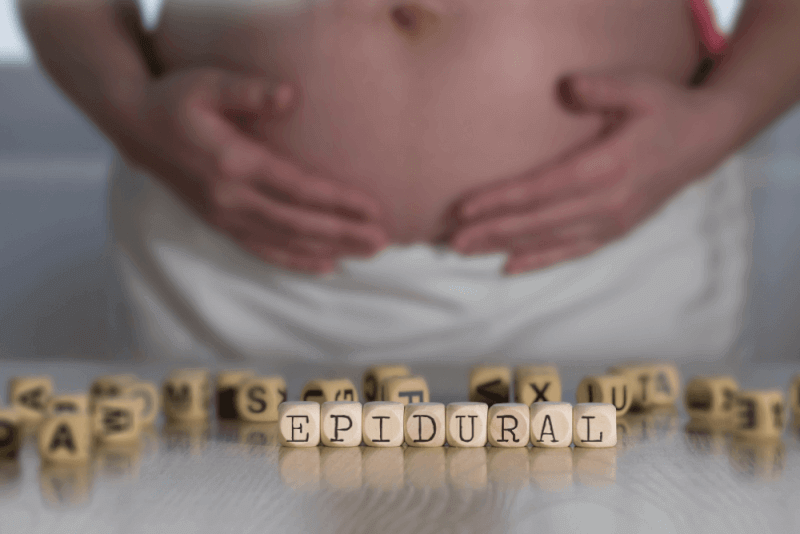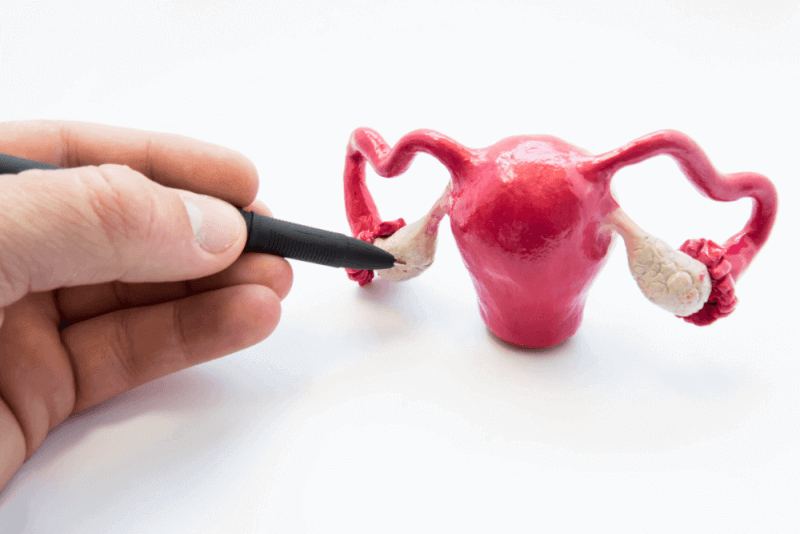What is Chronic Pelvic Pain?
Chronic pelvic pain is perceived as pain in the lower abdomen – roughly below the belly button and above the legs. Perceived symptoms can vary greatly from person to person. They can be felt as pain in the bony pelvis or in organs in the large or small pelvis. Symptoms can be diffuse and dull, sometimes with stabbing, spasmodic or wave-like pains. Pain can be felt on one side (left/right) or radiate to the legs, groin, buttocks or back. Often pelvic pain cannot be clearly localized.
In both women and men, painful sensations can originate in the pelvic organs or be diffusely localized in the pelvis. What causes chronic pelvic pain is often unclear due to the nature of the symptoms. Therefore, the symptoms should always be clarified by a specialist doctor.
Causes of Chronic Pelvic Pain
Pelvic pain can be caused by sexual organs such as the bladder, prostate, rectum, uterus, ovaries, prostate, testicles, or the musculoskeletal system that supports and stabilizes the pelvis and associated nerves.
There are many different triggers for pelvic pain:
- Disease, inflammation or injury to the affected organ
- Endometriosis
- Changes in mucous membranes
- Eating habits, food intolerances and allergies
- Chronic bowel diseases
- nfections, e.g. B. bladder infection
- Tightness and spasms of the pelvic floor muscles as a result of physical or emotional stress, injury or surgery
- Pain elsewhere in the body can occur in the pelvis or radiate there as pelvic pain
- Bladder and bowel problems can cause pelvic pain
Symptoms of Chronic Pelvic Pain
- Pelvic pain that persists for a long time; can develop into its own chronic pain disorder that becomes independent. Pain then loses its medical guidance and warning function. Physical or emotional stress can make the pain even more uncomfortable. Often there is also pain during and/or after sexual intercourse, thus impairing sexuality and intimacy.
- Urethral pain: Burning in the genital area during urination – often also after sexual intercourse – is perceived as pelvic pain.
- Irritable bowel syndrome as a cause of pelvic pain: Functional bowel disease with irregular bowel movements combined with constipation, diarrhea or both can cause pelvic pain. Irritable bowel syndrome can mimic the symptoms of all possible bowel diseases, so the diagnosis can only be made after ruling out other possible bowel diseases.
- Anal pain syndrome: Sometimes pain in the anus as a result of hemorrhoids, anal fissures, anal canal inflammation or irritable bowel syndrome is perceived as pelvic pain.
- Neuropathic pain: Irritation, damage or compression of pelvic nerves (such as the pudendal nerve) causes pelvic pain.
- Pain associated with pelvic floor dysfunction: Pelvic pain associated with muscle tension and stiffness in the pelvic floor, often with radiating pain and limited areas (trigger points) causing pain – often associated with bladder and/or bowel emptying disorders (bladder weakness or incontinence).
- Unilateral pelvic pain: This often occurs as a result of painful tension caused by improper tension or incorrect posture. Bad posture can be a bad habit or anatomical (e.g. a tilted pelvis).
Pelvic Pain in Men:
- Prostate pain (chronic prostatitis): Inflammation of the prostate is often felt as pelvic pain, with increased, painful urge to urinate, a feeling of pressure in the perineum and difficult, painful emptying of the bladder. A distinction is made between prostatitis caused by bacteria and a non-bacterial form. Treatment of this inflammation of the prostate is based on symptoms and is often long and difficult.
- Testicular pain: Burning or pain in the testicles, epididymis or scrotum after vasectomy or inguinal hernia surgery is rare and causes pelvic pain.
Pelvic Pain in Women:
- Pelvic floor descent: The organs in the pelvis descend and can be recognized by pressure and foreign body sensation in the vagina, lower abdominal and back pain, problems with sexual intercourse and difficulty emptying the bladder and bowels normally.
- Endometriosis: Endometriosis foci are mostly located in the lower abdomen (e.g. in the ovaries, peritoneum, intestines or bladder) and more rarely in other organs (skin, lungs) and are affected by the hormones of the menstrual cycle. Like the normal lining of the uterus, they grow with the cycle and can therefore cause severe pelvic pain in addition to traditional abdominal pain.
- Vulvadini, or vaginal pain: is abnormal sensations and pain in the woman’s external genitalia, often without a recognizable cause, but perceived as pelvic pain.
- Uterine fibroids: Benign growths in the uterus can cause pelvic pain in the form of a feeling of pressure in the lower abdomen. Depending on their size and location, they can be responsible for urge to urinate, bladder or bowel emptying disorders or back pain.
- Pregnancy: In a normal pregnancy, pelvic pain and cramps can occur due to changing progesterone levels. Severe pain with bleeding can be a sign of ectopic pregnancy or miscarriage and should be checked by a doctor.
- Symphysis loosening: During pregnancy or during childbirth, the ligaments of the pubic symphysis (symphysis) can loosen, which affected women may perceive as pain radiating to the entire pelvic girdle.
Chronic Pelvic Pain Treatment Methods
In case of non-specific pelvic pain, a doctor should always be consulted, especially if the cause cannot be clearly identified and/or the symptoms are severe. With the help of a thorough anamnesis and a thorough examination, the doctor can often make a diagnosis. In some cases, imaging methods such as ultrasound or magnetic resonance imaging (MRI) are also used. If the pain is sudden and severe or persists for a longer period of time, it should be referred to a clinic to rule out more serious and even life-threatening conditions such as bowel obstruction or appendix rupture.
The treatment of pain depends on the cause and can therefore mean very different time frames, measures and procedures from case to case. For example, if there is a pregnancy-related sympathetic relaxation, treatment is usually based on symptoms, with the most important step being stabilization of the pelvic ring. This can usually be achieved quite easily with a lap belt that relieves pain and squeezes the ilium to relieve pain. In addition, there are other possible treatment measures such as heat therapy, long wave therapy or specific pelvic floor exercises, but in rare cases surgical intervention to stabilize the symphysis is also indicated.
If there is a slight pelvic tilt, no special treatment is usually required, as this can normally be compensated for by the body itself. However, if the curvature is more pronounced and/or the misalignment causes symptoms, treatment with specific measures is definitely recommended, depending on the cause, the age of the person affected and the extent of the misalignment. In adults, if the trigger is, for example, a “real” difference in leg length (“structural pelvic curvature”), heel inserts (up to one centimeter difference) or a heel or sole height (up to three centimeters) can be used.







